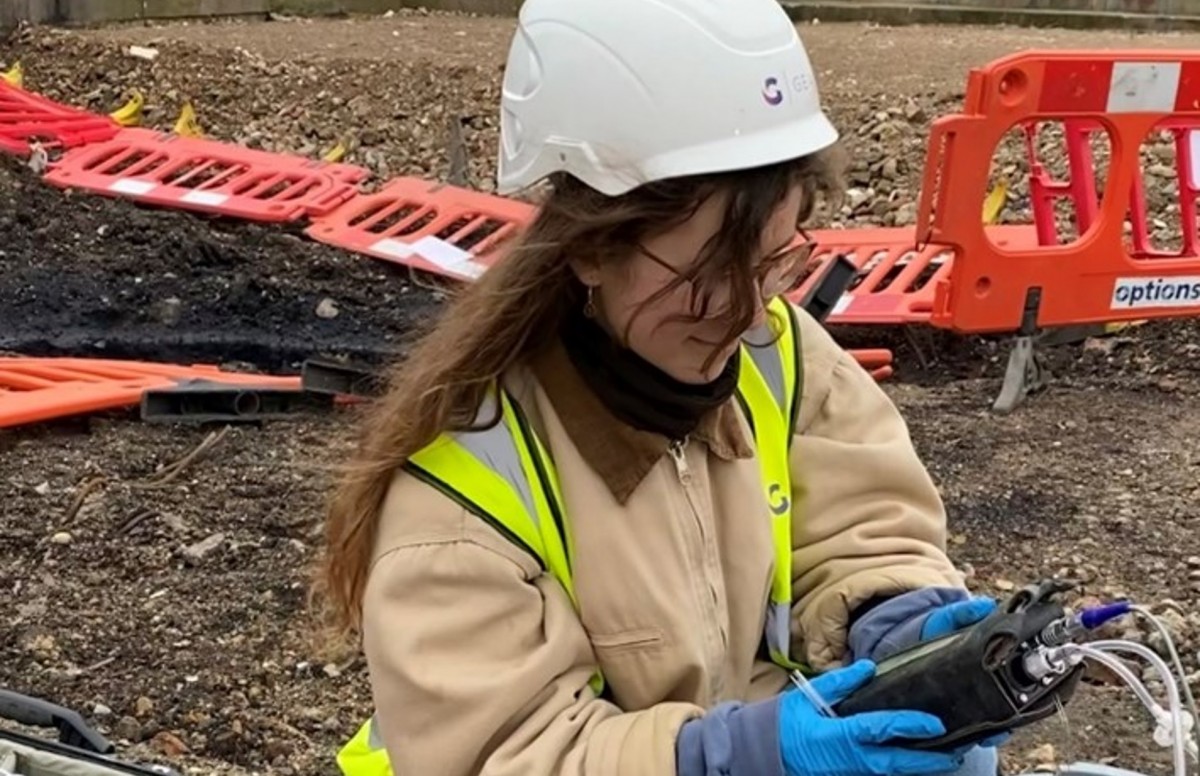5 Simple Techniques For Geotheta
5 Simple Techniques For Geotheta
Blog Article
A Biased View of Geotheta
Table of ContentsSome Ideas on Geotheta You Should KnowThe smart Trick of Geotheta That Nobody is Talking AboutHow Geotheta can Save You Time, Stress, and Money.The Main Principles Of Geotheta 9 Easy Facts About Geotheta Explained

They perform site examinations, accumulate examples, perform research laboratory examinations, and evaluate information to evaluate the suitability of the ground for building and construction projects - Tailings Engineer. Based upon their searchings for, geotechnical engineers supply referrals for foundation design, slope stability, maintaining frameworks, and reduction of geotechnical risks. They work together with other specialists, such as engineers, structural engineers, and building and construction groups, to ensure that geotechnical factors to consider are incorporated right into the overall project design and application
By examining the habits and residential properties of dirt and rock, they can determine possible geotechnical threats such as landslides, dirt settlement, or slope instability. Their know-how aids prevent failings or accidents that can endanger lives and residential property. Right here are some thorough duties and responsibilities of a geotechnical designer: Website Investigation: Geotechnical engineers conduct site examinations to collect data on subsurface conditions.
They analyze the information to recognize the homes and actions of the dirt and rock, including their stamina, permeability, compaction qualities, and groundwater problems. Geotechnical Analysis and Design: Geotechnical designers analyze the information collected throughout website investigations to assess the security and suitability of the website for construction tasks. They perform geotechnical computations and modeling to assess aspects such as bearing ability, settlement, incline stability, lateral planet pressures, and groundwater flow.
All about Geotheta
Structure Design: Geotechnical designers play a crucial duty in making foundations that can safely sustain the designated framework. They evaluate the dirt problems and load demands to figure out the proper structure type, such as shallow structures (e.g., footings), deep foundations (e.g (https://profile.hatena.ne.jp/geotheta/)., stacks), or specialized techniques like dirt renovation. They think about aspects such as negotiation restrictions, bearing capability, and soil-structure interaction to create ideal structure styles
They evaluate construction strategies, display website activities, and conduct area inspections to confirm that the style recommendations are complied with. If unanticipated geotechnical issues emerge, they examine the circumstance and offer referrals for remediation or changes to the layout. Risk Assessment and Reduction: Geotechnical designers assess geotechnical threats and dangers related to the project website, such as landslides, liquefaction, or dirt erosion.

Collaboration and Communication: Geotechnical engineers function carefully with other experts associated with a job, such as architects, structural designers, and construction groups. Efficient interaction and collaboration are necessary to integrate geotechnical considerations right into the total project layout and construction process. Geotechnical engineers offer websites technical knowledge, response queries, and make sure that geotechnical demands are satisfied.
3 Easy Facts About Geotheta Described
Here are some kinds of geotechnical designers: Structure Engineer: Foundation engineers concentrate on designing and assessing foundations for frameworks. They analyze the dirt problems, load requirements, and site features to determine the most suitable foundation type and layout, such as superficial structures, deep foundations, or specialized strategies like stack foundations.
They assess the variables affecting incline stability, such as soil residential or commercial properties, groundwater problems, and incline geometry, and establish approaches to stop slope failures and reduce dangers. Quake Engineer: Quake designers concentrate on assessing and creating structures to stand up to seismic forces. They evaluate the seismic risk of a website, evaluate soil liquefaction potential, and establish seismic style standards to guarantee the safety and security and resilience of frameworks throughout earthquakes.
They execute field screening, collect samples, and evaluate the gathered information to define the soil residential properties, geologic formations, and groundwater conditions at a website. Geotechnical Instrumentation Designer: Geotechnical instrumentation designers focus on tracking and measuring the actions of dirt, rock, and frameworks. They set up and preserve instrumentation systems that keep an eye on aspects such as dirt settlement, groundwater degrees, incline motions, and architectural displacements to evaluate efficiency and give very early warnings of possible issues.
Facts About Geotheta Uncovered
They conduct tests such as triaxial examinations, loan consolidation examinations, direct shear tests, and permeability tests to collect data for geotechnical evaluation and design. Geosynthetics Designer: Geosynthetics designers specialize in the style and application of geosynthetic materials, such as geotextiles, geogrids, and geomembranes. They use these materials to enhance dirt security, strengthen slopes, offer water drainage solutions, and control erosion.
They often tend to be investigative individuals, which implies they're intellectual, introspective, and analytical. They are curious, methodical, logical, logical, and logical. Some of them are likewise social, indicating they're kind, generous, cooperative, person, caring, helpful, understanding, sensible, and pleasant - Tailings Engineer.
In the workplace environment, geotechnical designers utilize specialized software application devices to do estimations, develop designs, and assess information. They prepare reports, testimonial task specifications, connect with customers and employee, and coordinate job activities. The office setting gives a conducive setting for research, evaluation, and cooperation with other specialists involved in the task.
How Geotheta can Save You Time, Stress, and Money.
They regularly visit job sites to conduct site investigations, assess geotechnical problems, and collect information for analysis. These gos to involve traveling to different locations, in some cases in remote or difficult surfaces. Geotechnical designers may do soil tasting, conduct examinations, and monitor construction activities to guarantee that the geotechnical aspects of the project are being executed correctly.
Geotechnical engineers additionally work in specialized geotechnical research laboratories. In these centers, they perform experiments, do examinations on soil and rock samples, and assess the design residential properties of the products. Geotechnical lab engineers function thoroughly in these atmospheres, managing screening equipment, running tools, and tape-recording data. They collaborate with other lab personnel to make sure precise and trustworthy screening outcomes.
Report this page